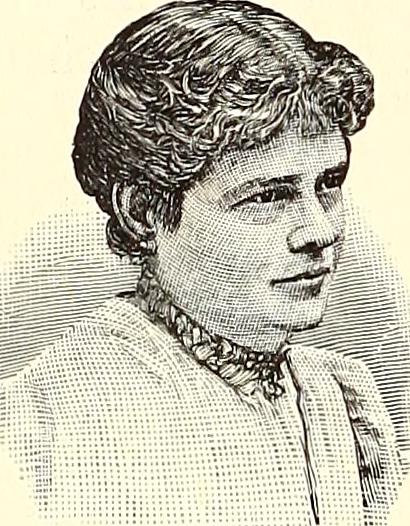
Religious Foundress, Servant of the Incurable, Model of Holy Perseverance
Rose Hawthorne Lathrop
She was the third daughter of the celebrated American novelist Nathaniel Hawthorne, but she abandoned a life of literature to care for the cancerous poor. Rose Hawthorne Lathrop was born in Massachusetts, one year after her father’s work The Scarlet Letter was published. A descendent of the prestigious families of Peabody and Hawthorne, Rose was well-rounded in culture and blessed with many talents. Following in her father’s footsteps, she tried her own hand at writing, and published a number of works. She later married George Lathrop, a fellow writer, and together they converted to Roman Catholicism. Their marriage was suddenly shattered after the devastating loss of their only child, Francis, and they grew apart, eventually separating. George struggled with alcoholism, and he became so unbearable to live with that Rose was forced to apply to the diocesan authorities for permission to leave him. Her request was granted. A burning charity for him remained, and notations in her diary indicate that she continued to love and pray for him after their separation.
Following the separation, Rose felt the Lord’s call to serve Him by taking care of poor and abandoned cancer victims. She was moved with compassion for their predicament, and she later acknowledged, “A fire was then lighted in my heart where it still burns. I set my whole being to endeavor to bring consolation to the cancerous poor.” After taking a nursing course at New York’s Cancer Hospital, she wasted no time in hurling herself into the poorest pits of New York. She readily exchanged her cultured and refined upbringing for a tiny cold-water apartment in the city’s Lower East Side, where she nursed incurable cancer patients. She later said, “No description had given me a real knowledge of how dark the passages are in the daytime, how miserably inadequate the water supply, how impossible that the masses of poor in tenements should keep themselves or their quarters clean.” But sustained by her faith in God, she resolved, “…to take the lowest class we know both in poverty and suffering and put them in such a condition, that if Our Lord knocked at the door, we should not be ashamed to show what we have done.” Surrounded by the impoverished patients, she not only lovingly washed their cancerous sores and bed sheets, but extended to them loving affection. She restored to them the sense of dignity they had lost in being outcast by society.
“See in each sufferer Our Lord Jesus Christ. Remember… they have the image of God in their souls.”
In 1897, Rose was joined by Alice, a curious woman who had read about Rose’s works in a newspaper article. Moved by Rose’s sense of sacrifice and compassion, she decided to volunteer; but what started as one afternoon a week became a life transformed – as she would permanently link herself to Rose’s work. The duo formed the “Servants of Relief,” a community that serves poor cancer patients without accepting payment from patients or hired help. After pleading for financial assistance through the newspapers, Rose finally made a substantial payment on their first free home in 1899, and they became the Servants of Relief for Incurable Cancer. They followed the advice of a priest and became Dominican tertiaries, taking the names Sister Mary Alphonsa and Sister Mary Rose. In 1900, the archbishop gave them permission to wear the Dominican habit, and they finally began building a new religious community, accepting four new postulants in 1901. Mother Alphonsa died quietly in her sleep in 1942 after selflessly serving the poor for 30 years. Patients were cheered by the remarkable love which she gave them. Her heart was always raised to God, and she said, “I will see all things only through the presence of God, thus freeing myself of personality and forgetting my existence. I will regard creatures in the spirit of Jesus Christ.” Their community, also called the Hawthorne Dominicans, continues to serve the poor afflicted with cancer today. Mother Alphonsa’s cause for canonization was opened in 2003.

